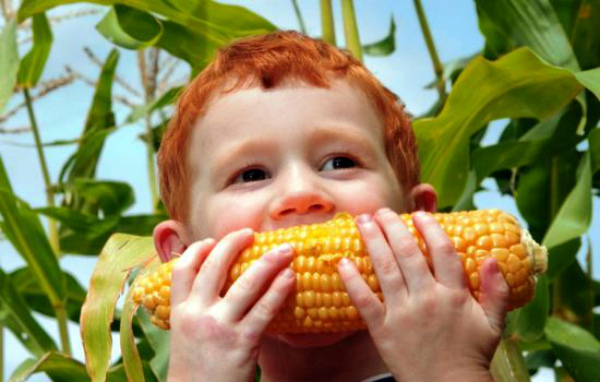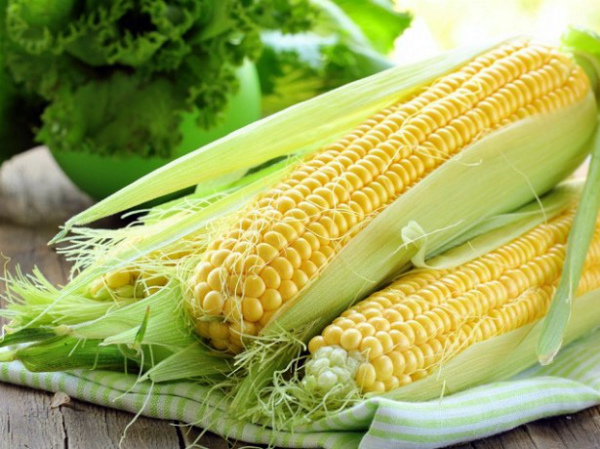Is corn a vegetable, fruit or cereal?
Content
What is corn
Corn comes from a plant genus of the cereal family. The plant is tall, often the height of the stem exceeds 3-4 m, and in view of this growth it has a well-developed root system, located both underground and above it. Unlike other cereals, the stem is not hollow inside, it reaches 7 cm in diameter. The inflorescences consist of spikelets with staminate or pistillate flowers. Stamens gather in spikelets in pairs, pistillate ones are arranged in rows of 6-16 flowers on the cob. The fruit is a weevil.
The culture is divided into 9 large groups: siliceous, dentate, semi-dentate, bursting, sugar, starchy, starchy-sugar, waxy and filmy. They differ among themselves in the type of grain structure, taste and cultivation characteristics.
So, according to the botanical definition, corn is still a cereal and a fruit. After all, the cobs store the seeds with which the corn multiplies. In this case, the fruit is eventually separated from the plant in order to germinate.
However, if you look at the culinary definition, this culture is a vegetable. A fairly common misconception is that a vegetable is an unsweetened fruit that is used to prepare main dishes, while anything sweet is a fruit and should be served for dessert. It turns out that a complex grain crop of corn is both a vegetable, and a cereal, and a fruit.
It should be noted that cereals are in many ways similar to pulses and legumes. What they have in common is that they eat the juicy part of the plant. They can be processed into cereals or canned as a vegetable or fruit. Often this similarity confuses people, and they urgently begin to recall school biology lessons in order to identify this cereal anywhere.
Influence on the body
If we consider the effect that corn has on the human body, then the first step is to characterize what vitamins and minerals are contained in its cobs.
Probably no vegetable or fruit can compare with corn in terms of the range of nutrients and nutrients. A large amount of fiber, fats and essential oils has a beneficial effect on the gastrointestinal tract, helps to quickly remove toxins. The complex of vitamins A, C, PP, E and group B increases immunity and normalizes metabolism. The mineral composition in the form of magnesium, calcium, iron, phosphorus, manganese has a beneficial effect on the condition of the skin and hair, the work of the heart and blood vessels.
Corn grain (100 g) contains:
- carbohydrates - 67.5 g;
- protein - 10.3 g;
- fat - 4.9 g.
The calorie content of the product is from 88 to 325 kcal.
With regular use, this cereal increases immunity, removes toxins and toxins from the body, and lowers cholesterol. Often it is used as a dietary food for hypertension and edema, ulcers of the gastrointestinal tract. Despite the high sugar content of some varieties, corn is safe for diabetics.
Of course, corn alone will not help to cope with diseases, but if you include it in your diet, you can avoid many unpleasant diseases. This vegetable (or fruit) is recommended for both those who are trying to lose weight and those who, on the contrary, are gaining weight. The high amount of selenium in grains helps to cope with premature aging of the skin. And in folk medicine, it is often used and legumes are used as a remedy for diarrhea and dysentery.
There is probably nothing that corn cannot help. Not as a panacea, of course, but as one of the auxiliary elements.
How to choose
So, we figured out what corn is - a cereal, vegetable or fruit. Now is the time to learn how to choose the right corn cobs, so as not to make mistakes.
Most cereals show their ripeness by the color of their grains. The ears in the milky stage are light yellow in color, they contain the most vitamins and minerals. The richer the color of the cob, the older the vegetable.
The ears should be approximately the same size between each other, covered with leaves. If there are no leaves, this means that the cereal was treated with chemicals, which caused the leaves to curl and no longer look attractive. It is not worth buying such cobs, since it is not known what chemicals were used for the treatment.
Of course, you should not buy cobs on which there are grains with damage, various brown or black spots.
Corn in medicine
In medicine, different parts of corn are used. For example, stigma columns, which are harvested when the ear is in the milky stage, are used in the treatment of liver diseases or as a choleretic and diuretic. They contain large amounts of ascorbic acid, vitamin K, fatty oil, essential oils, saponins. Corn extract is used for cholangitis, cholecystitis. In case of emergency to stop bleeding.
Due to the high content of fatty oil, cereals and legumes are valued as an additional element of the diet for atherosclerosis, obesity and diabetes mellitus.
Corn grains and legumes in the form of a soup-puree are part of the diet for gastritis, having a positive effect on the gastric mucosa. However, legumes and corn grains are used not only in dietetics, but also in cosmetology as masks for the skin.
Video "Useful properties of corn"
This is an excerpt from the program of the first TV channel "It's great to live!" will tell you about corn: its benefits for the body, how to choose, how to store and how to cook.




